|
Photographic
Editions - Destroy the negative? Where's the value?
Thoughts
and e-mail exchanges on the subject by Jean Ferro
6/24/03
between Jean Ferro, (intro and questions) (response) Stephen Perloff,
Publisher of The Photo Review / The Photograph Collector and Elizabeth
Ferrer, Specialist Mexican Art, along with an excerpt from Alex Novak,
iPhoto Central on Vinta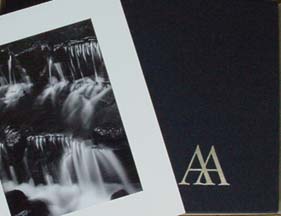 ge
collecting ge
collecting
In the early to mid-seventies, a photograph of Imogene Cunningham was
very affordable. At the time, photographers were always trying to find
ways to "increase" the value of their work. A photograph (price/value)
did not compare to a great painting or even a mediocre, one-of-a-kind
painting. The cost of producing the image and the selling price were very
close to each other, especially cibachrome prints and dye transfers.
Lithographs
were among the most affordable and popular collectible. First, you had
the artist signed lithos and then, followed a supply of unsigned lithos.
The artist would create a limited 2nd generation edition from his original
art work and then destroy the plates that created the lithograph. Hence,
one was left with a limited supply of a 2nd generation image, the original
and perhaps a couple of artists proofs.
The demand
for multiple copies of a photographic image, because of it's popularity,
encouraged photographers to print according to demand or in some cases,
create completed numbered limited photographic editions. My recollection
is that many of the photographers during the early to mid-late 70's printed
the full edition, usually no larger than 25...and then "supposedly"
retired the negative...for LIFE..!
I remember it well because I was raising a young child and the cost of
edition printing was very expensive. The "type "R" print
was a disaster for a collector and was considered the "disappearing
image." Whether in a box, drawer or on the wall, the 1970's-80's
"type R" color's shifted into another dimension of unexpected
color, so I printed "type'R's" as test prints only, an inexpensive
experiment to see the image enlarged from the 35mm transparency. I kept
thinking, I'll just choose one of my images and make it an edition. This
never happened because I could never decide which image to make the heftiest
investment in at the time. My recollection of the practice of printing
the full edition at one time seems shaded now that I'm hearing that a
lot of photographers just print on demand. At one time I had imagined
myself destroying the negatives after the edition was printed...actually,
I still feel that way, "X" amount of original prints and then
that's it...ceremonial destruction.
When WIPI recently collected our member photographs for the WIPI/Palmquist/Yale
collection, I noticed an array of "limited edition" notations
from 1/1 upwards to 80/300. Knowing some of these editions couldn't have
been printed in their entirety, I began to ask questions. Shortly thereafter,
a couple of photographer buddies went to the June Photo District News,
"New Creative Vision Conference" held in Los Angeles. They ventured
into the conference seminar on "How To Get Gallery Representation"
with a panel of gallery owners who spoke on collecting. They came away
with the understanding that basically ... for a photograph to become really
valuable...the photographer has to leave the planet...! Obviously that
means he cannot produce the image himself or under his direction anymore...hence...
a very limited edition...!
There are
varying techniques that photographers use to control the identity of their
work. Ansel Adams, according to his personal gallery, signed his prints
when he was the printer and initialed them when his assistant did the
printing. He didn't actually create limited editions, but rather created
a special image to be included in a specific limited edition of a book.
A friend of mine, (who met Ansel at the time in Ohio) has TWO of the very
impressive books that contained actual photographic prints. The listing
reads: (On back of photo:) Fern Spring, Dusk Yosemite Valley, California,
CA 1961 by Ansel Adams An Original Photographic Print To Accompany the
De Luxe Edition of ANSEL ADAMS: IMAGES, 1923-1974 Published by the NEW
YORK GRAPHIC SOCIETY, LTD. Boston, 1974. This is Print Number CCXI (211)
(the one book has been opened to reveal the print inside and the other
is CCX (210), never opened, both are encased in their own beautiful black
cloth case, with the engraved letters AA. The print size, including mat
is 13.5 X 16.5. It's impressive and feels so important. You know you are
holding something valuable in your hands, it's special, not duplicable
and signed by Ansel.
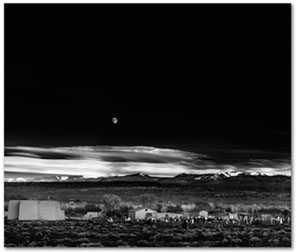 Ansel
also created a collection of prints that were from a selected group of
images, which became a set of limited edition portfolios. Some of the
images included in the portfolios would also be for sale -- independent
of the grouping in the book. The images chosen for the portfolio would
not be produced again as a "specific" group of images. Interesting
to note that Ansel's image "Moonrise, Hernandez " may have a
circulation approx. 900 upwards to 1200 prints according to his gallery.
So, I'm assuming from my e-mail from Stephen Perloff, publisher of "The
Photographic Collector" Newsletter, that earliest of the Moonrise
series would be the most valuable. Ansel
also created a collection of prints that were from a selected group of
images, which became a set of limited edition portfolios. Some of the
images included in the portfolios would also be for sale -- independent
of the grouping in the book. The images chosen for the portfolio would
not be produced again as a "specific" group of images. Interesting
to note that Ansel's image "Moonrise, Hernandez " may have a
circulation approx. 900 upwards to 1200 prints according to his gallery.
So, I'm assuming from my e-mail from Stephen Perloff, publisher of "The
Photographic Collector" Newsletter, that earliest of the Moonrise
series would be the most valuable.
What are
the collectors looking for? Is it the image? The quality of the image?
A time period? Limited edition? A presentation similar to Ansel Adams?
I understand, a few years ago, a special collection of Cindy Sherman's
self-portrait portfolios sold at a $1,000,000 each to museums and collectors.
I don't know how many images were contained in the portfolios, nor the
size or print types, or even if the price quoted is correct...but it sounds
good and I'm happy to hear that a contemporary photographer can command
high prices for their work.
Where does one find guidelines about the ins and outs of print editions?
Vintage, archival requirements? And now what will all this mean due to
the multiplicity of the digital printing revolution? Now you have images
on CDs, in various resolutions, easily printed over and over. At least
a dupe transparency was a generation away from the original. It was very
hard to get an exact dupe; there was always some negligible variation
that would distinguish the dupe from the original transparency. Sometimes
this difference wouldn't be noticeable to someone viewing the duped slide,
but, put the original and the dupe side by side and the difference would
be very pronounced. The duped image became a quest for the best labs in
the world to produce a transparency most exact to the original. At the
time, I would label my transparencies "o" for originals and
all others were considered dupes. With digital printing, someone can take
your digital files and print a fine print that will last longer than the
conventional photo printing papers.
Should
we as artists register the image with the copyright office as a way of
signing our signature to an original representation of our work? I
wrote to the Photo History group and received a couple of very interesting
responses. Of course I had a flood of questions to ask, and Stephen Perloff
of The Photographic Collector wrote back with some surprising responses.
Several PRO photographers I asked personally had a different take on the
subject, all different and very variable... Perhaps, in the end...it's
the "image itself" that can spin the golden thread of success
in the eyes of the beholder and the world.
Re: [PhotoHistory]
Photographic Editions - Destroy the negative?
An e-mail request to the Photo History group, responses from Stephen Perloff,
The Photographic Collector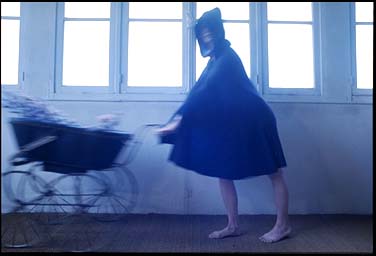 and Elizabeth Ferrer, Specialist in Mexican Photography.
and Elizabeth Ferrer, Specialist in Mexican Photography.
1st Response
to Posting: STEPHEN PERLOFF, In a message dated 6/24/03 3:31:12 PM, info@photoreview.org
writes:
JEAN
FERRO:
Hello, Is there someone on the list who knows the facts about:
Photographic editions?
Archival terms?
Vintage Prints?
There seems to be considerable confusion on all subjects. Hopefully someone
will have answers to all or any one of the listed questions?
1) Are editions printed all at once? i.e., 10/100, means 10th image of
100 printed at the same time?
STEPHEN PERLOFF:
No - and this is problematic. Photographers often print five at a time
(say) to order and other than the most famous photographers who sell out
an edition, many editions are never completed. In fact, I contend that
MORE photographs are printed because of limited editions, since most photographers
print a few and then would prefer to move on.
JEAN FERRO:
2) Is there a specific time frame to print the edition? (i.e., so that
all the ink, chemicals, paper, tonal values are the same.)
STEPHEN.
PERLOFF: No, though perhaps there should be, but in fact most photographers
match the print very well. Despite all the changes in papers, etc., these
changes usually take place very slowly.
JEAN. FERRO:
3) Is there a difference between the term "edition" and "limited edition"?
STEPHEN PERLOFF:
It's semantics. Is an edition of 500 limited?
JEAN FERRO:
4) For instance, could someone print their one image "edition of 300"
over time, and just number them as they go.? (printing from 1 year upwards
to 5 - 10 years to print the complete edition?
STEPHEN PERLOFF:
Certainly, though large editions are rare. I would prefer to see photographers
number their prints consecutively and date each with the negative and
print date. Of course, they'd have to keep good records. This would make
earlier prints more valuable. Instead the price of some editions rises
as the edition goes on (say each 5 prints cost more than the previous
five).
JEAN FERRO:
5) Must the edition be printed on exactly the same paper, using the same
method of printing, not mixing various papers and changing to digital
prints to complete the 300 edition ?
STEPHEN PERLOFF: Of course. Some people have made a new edition of sold-out
images in a new size or medium.
JEAN FERRO: ...Using the SAME/EXACT negative/transparency/digital file:
6) Can there be several different edition sizes? i.e., and an edition
of 100 sized at 8x10? Another edition of 25 of 11x14"? 3 of 20x24"?
STEPHEN PERLOFF: Yes. This is done by some people, more usually in two
sizes - large and Brobdinagian.
JEAN FERRO:
Are there specific terms for a breakdown of this type? i.e., "Trees,"
1990, 11" x 14" 2/25 of three variable editions?
STEPHEN PERLOFF:
I haven't seen any consensus on this. It's usually an edition of 8 at
19"x19" and an edition of 4 at 44"x44". The listing (say in an auction
catalogue) would just be for that sized edition, e.g. 2/10.
JEAN FERRO:
7) How is a negative or transparency retired (without the photographer
dropping dead or destroying the original.) to guarantee it will no longer
be printed by the creator to protect the investment of the collector?
STEPHEN PERLOFF: Only a handful of people have destroyed or canceled negatives.
Usually it's just trust and reputation. It would be hard to sell a new
edition if you had a reputation for "cheating." This brings up another
problem. Limited editions benefit collectors and sellers in the secondary
market, but rarely the photographer. Only the most famous photographers
get to raise prices because an earlier edition sold out. The profits are
in the secondary market and in the US the artist never sees any of that.
JEAN FERRO:
8) How many artists proofs are considered appropriate per image?
STEPHEN PERLOFF:
I haven't seen any consensus here either, but it would be frowned upon
if an edition of 10 had 10 AP (artist proofs).
JEAN
FERRO: 9) RE: Digital Editions, where do things stand in terms of digital
files? It changes yearly, if not monthly, regarding the range, brilliance
and archival property of inks and paper. So far the only "small" printer
is the Epson 2000P w/pigmented ink and archival paper, produces the most
longevity of over 100 years and maybe upwards to 200 years and it's largest
print size is 13"x19". The 2000P has a metamerism problem, which personally,
I believe is an asset because it's helps to identify the print longevity
and stability. (which is becoming harder to recognize with the vast amount
of paper types now available). 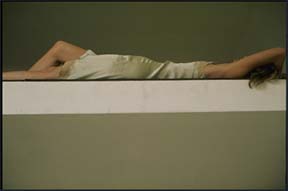
The
2000P metamerism (color shift/hue cast in different lighting situations)
seems to only encourage more viewing to see the uniqueness of the color
shift. Sounds like a kinetic photograph! For anyone interested in "how
archival is it?"....FYI: Henry Wilhelm is the longevity print expert.
http://www.wilhelm-research.com/
and works closely w/Nash Editions. Saw this recent article: (Wilhelm Imaging
Research paper titled: "Light-Induced and Thermally-Induced Yellowish
Stain Formation in Inkjet Prints and Traditional Chromogenic Color Photographs"
presented at the "Japan Hardcopy 2003" conference in Tokyo on June 12,
2003. The conference was sponsored by The Imaging Society of Japan. It's
always been my understanding that an edition was printed "all at once,"
i.e., Lithographs (plates destroyed after printing) and that an archival
print was generally b/w produced on fiber paper (silver gelatin). Now
with digital printing associated to archival inks, and archival paper,
color will last as long as b/w fiber prints, maybe longer.
STEPHEN PERLOFF: I was just at a gallery that had to reprint and replace
a 1999 digital edition because the color shifted. Soon digital prints
will be more stable even than silver and already can be more stable than
a C-print. It will take a while for collectors to adjust. Of course once
you get the print you want, you can set an assistant to make identical
prints in large editions. Here again it will be market forces and trust
that control editions.
JEAN FERRO:
Finally... 10) VINTAGE: What is the time span for something to be considered
vintage? Is it a print produced within 3 years after it was documented
onto film...or is this also another flexible area...and can it range from
3 years up to 10 years?
STEPHEN PERLOFF: This is even more complicated and I won't get into all
the variables here. But if the first print was made 10 years after the
negative, is that vintage? A 1950s Frank is worth more than a 1960s print
is worth more than a 1970s print. And certainly some photographers made
"better" prints later.
JEAN FERRO: 11) What period of time has to lapse after the print date
for it to be considered vintage?
STEPHEN PERLOFF:
It's not like a car. It's immediately vintage, though the term is not
really used for contemporary art.
JEAN FERRO:
11a) Is Polaroid considered vintage?
STEPHEN PERLOFF:
By definition.
JEAN FERRO:
Again, it's been my understanding that for an image to be considered vintage,
the original image would be produced using a choice of known film types,
which would then be produced on paper within a relatively short period
of time to guarantee the photographer's vision. The photographer was guesstimating
that the photographed image would be produced on the available materials
(either old and available or new at the time) they were familiar with,
which in turn stimulated them to create the original photographic project
with the knowledge of the outcome and final print. If they chose to deviate
from the standard (manipulate in the darkroom in some fashion), they were
still working with the current materials that were available at the time
of the photographic project and close to the time frame of image inception.
STEPHEN PERLOFF:
Well, sometimes the photographer just chose what was at hand rather than
planning it all out.
JEAN FERRO:
12) OK...I know this is long, and even a suggestion of where to find the
info would be greatly appreciated.
STEPHEN PERLOFF:
Read The Photograph Collector! (Oops, a commercial message.)
JEAN FERRO:
As a photo artist I feel it's really valuable to be equipped with the
knowledge of the collectable marketplace.
Jean Ferro. President of Women In Photography International
Stephen Perloff, Editor
The Photo Review / The Photograph Collector
140 East Richardson Avenue, Suite 301 Langhorne, PA 19047
Phone: 215/891-0214 Fax: 215/891-9358
E-Mail: info@photoreview.org Website: http://www.photoreview.org
Any opinion expressed above is not that of my employer. Nor is it even
my own opinion. Any resemblance to an opinion held by any person, living
or dead, is purely coincidental.
The Photo Review is a critical journal of national scope and international
readership. Publishing since 1976, The Photo Review covers photography
events throughout the country and serves as a central resource for the
Mid-Atlantic region. With incisive reviews, exciting portfolios, lively
interviews, the latest in books and exhibitions, The Photo Review
quarterly journal has earned a reputation as one of the best serious photography
publications being produced today.
Images: Ansel
Adams: Fern Spring, Dusk Yosemite Valley, California, CA 1961, De Luxe
Edition of ANSEL ADAMS: IMAGES, 1923-1974 Published by the NEW YORK GRAPHIC
SOCIETY, LTD. Boston, 1974.
Moonrise, Hernandez 1941 by Ansel Adams Website: www.anseladams.com
Jean Ferro
S-P Collection: Death of the American Baby, Paris 1974
Jean Ferro S-P Collection: The Green Slip, Paris 1974 (published Zoom
Magazine editions: Starting 1/28/84 France #110, England #26, Italy
#47, Germany 1/85, first exhibited: RIT invitational 1978 www.JeanFerro.com
Note: First
complete Jean Ferro exhibition, printed by Paris Photo Lab w/Exhibition
poster, "Bomarzo" was shown w/sponsorship of Paris Photo Lab
and Propaganda Films in Hollywood, summer, 1989. Two sets of prints were
made from work dated 1975-1987, most were transparencies and b/w negatives
that had never been printed before. One set remains (some images sold).
..sigh... The second set of unsigned prints, while waiting for
exhibition in Paris, France, "disappeared" from the lab in Paris,
The full set of Exhibition prints contained: 34 cibrachromes ranging in
size 13 x 19 1/2 down to 4 3/4 x 7" (includes 7 series groups) and
13 silver gelatin, ranging in size 13 x 19 1/2 to 4 3/4 x 7", (includes
3 series groups ). Several of the images had been published in French
Zoom, #110, 1985, 8 page layout.
Elizabeth
Ferrer, specialist in Mexican Photography reply:
In a message
dated 6/25/03 2:21:25 PM, elizabeth_ferrer@yahoo.com
writes:
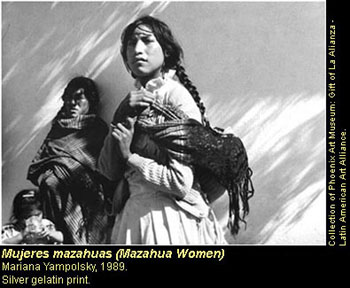 <<
I'd like to add to this discussion the point that things are quite different
when you are looking at photography out of the U.S./ European mainstream.
I am a specialist in Mexican photography, and it would have been quite
rare in this country for a photographer to create editions of their work
up until the 1980s. At that point, younger photographers, particularly
those creating constructed or manipulated imagery, began to introduce
small editions. Some of the greatest Latin American photographers, for
example Manuel Alvarez Bravo or Mariana Yampolsky in Mexico, never editioned
their work. Who knows how many copies of Alvarez Bravo's La Buena Fama
Durmiendo are floating around? Certainly hundreds. That work was made
in 1939, but there are prints of varying vintages (and values). In the
case of Yampolsky, her foundation is now numbering the posthumous editions,
but none of the works printed during her lifetime are numbered. <<
I'd like to add to this discussion the point that things are quite different
when you are looking at photography out of the U.S./ European mainstream.
I am a specialist in Mexican photography, and it would have been quite
rare in this country for a photographer to create editions of their work
up until the 1980s. At that point, younger photographers, particularly
those creating constructed or manipulated imagery, began to introduce
small editions. Some of the greatest Latin American photographers, for
example Manuel Alvarez Bravo or Mariana Yampolsky in Mexico, never editioned
their work. Who knows how many copies of Alvarez Bravo's La Buena Fama
Durmiendo are floating around? Certainly hundreds. That work was made
in 1939, but there are prints of varying vintages (and values). In the
case of Yampolsky, her foundation is now numbering the posthumous editions,
but none of the works printed during her lifetime are numbered.
Another issue to think about when looking at photography outside the mainstream
is economics. Photographers often did not have the funds nor the supplies
to produce an entire edition at one time - they made a print when they
needed to, for a show or a book or for a sale. Up until fairly recently,
many photographers from Latin American would use trips to the U.S. to
stock up on paper. That has largely changed, but I do some work with a
collective in Chiapas that still has to send their negatives to Mexico
City for high quality prints. So just throwing another element into this
discussion. I'm happy to address questions that relate to Mexican and
Latino photography, which to my knowledge have not appeared here previously.
>>
Elizabeth
Ferrer
Mujeres
Mazahuas, collection from the Phoenix Art Museum at
http://www.phxart.org/yampolsky.html
Credit Line: Mariana Yampolsky, photographer, Library of Congress, Prints
& Photographs Division
All images chosen to illustrate the article were culled from private collections
or public online display and credited accordingly.
Alex Novak,
Vintage Works, Ltd. i Photo Central,
http://www.iphotocentral.com/ an e-Zine for the collectors, images for
sale, special events, collecting issues & resources, eZine newsletter
(Permission granted to use Information gleaned from
(E-Photo Newsletter :
issue #57, A QUESTION OF VINTAGE AND DATING IN PRINTS AFTER 1955)
E-Photo
Newsletter issue 59 7/3/2003 Ê REVISITING: A QUESTION OF VINTAGE AND
DATING IN PRINTS AFTER 1955
Two newsletters ago I wrote the following article and asked for response.
I have recapped both the original piece and the responses below. When
we are talking about prints whose "vintage" quality or date is difficult
if not impossible to definitively ascertain by empirical means, I wonder
how much of a premium there should be on such an image. This is a specific
problem with images that were made mid-1950s through to today--some of
the most currently popular photographs with today's collectors. Is there
meaning to "vintage" or even dating of prints when this becomes impossible
to prove scientifically as it is with many prints made after 1955? Should
all prints after this date be worth the same for a given image? If not,
why not?
This issue was particularly brought home with the steep prices at the
recent Seagram's sale for prints made largely after 1955. Should a collector
have to depend on the connoisseurship (or lack thereof) of an auction
house or a photo dealer to ascertain dating? Especially in view of recent
market scandals on this very issue (Lewis Hine, Man Ray and others) involving
some photo dealers (and auction houses), where "vintage" was much more
easily determined and was still inaccurately portrayed, however innocently?
While some of this "lack of knowledge" has been rectified, especially
by AIPAD's fine session on conservation techniques at the Metropolitan,
there does not appear to be similar techniques available for prints made
after 1955 that work consistently.
Even provenance is not always a perfect solution, with artists themselves
and their heirs occasionally being less than accurate with the dating
of prints. I can cite at least four such instances that I personally encountered
where the photographer or heir inaccurately dated material by substantial
margins or marked it "vintage" when it clearly was not. It gets particularly
problematic when heirs date unsigned images that are made sometimes after
1955 when brighteners were added to some commercial photography papers.
It may then even be impossible to know who exactly made that kind of print--another
major problem.
Worse, there are no guarantees in dating photographs at auction. Just
read the various auction house catalogues' fine print to see that you
are only guaranteed that IMAGES are by the photographers themselves (not
even necessarily the prints). This came as a shock to many during the
Hine's scandal when prints were determined by scientific methods to have
been printed many decades after Hine had died. Today these prints that
were sold for tens of thousands of dollars in some cases have little market
value (a group of 14 of these prints dated 1973 by Phillips sold at the
Seagram's sale for under $800 a piece; which also makes one wonder what
might now happen to these prints). At least, as I understand it, the AIPAD
photography dealers who sold the Hines that were printed well after Hine's
death were giving money or credit back to their clients after the facts
surfaced and the prints went for testing. While occasionally auction houses
may make allowances for inaccurate catalogue information, they really
don't have to do this because of their catalogue exclusions.
As we enter a digital age, these questions will certainly become even
more important and may revolutionize how the photography market handles
the issue. It is important that the market deal with these issues forthrightly
in order to maintain the confidence of collectors and curators. I would
appreciate other viewpoints on this issue, and I will be happy to publish
them in a subsequent newsletter and/or on-line if fully attributed. Just
email me at anovak@comcat.com.
If you have any information on editions in your country, please send it
along to: Info@womeninphotography.org
type "EDITIONS" in the subject area
return
to WIPI News articles
|